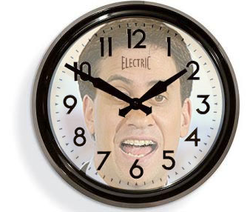Three o'clock

Consider a wall clock with three hands: an hour hand, a minute hand and a second hand. The second hand of this clock moves continuously (not on one-second intervals, as with many other clocks). Suppose that this clock is placed on the wall of the lobby of Palma Hall.
Now, here's the situation. Nikko, Isah and Sylvan agreed with one another to arrive at the lobby on or before 3 in the afternoon to discuss their project in Philo 1.
Ironically, Isah arrived at the lobby seconds past three, when the second hand of the clock bisects the angle formed by the remaining hands (for the first time),
Nikko arrived seconds past three, when the hour hand of the clock bisects the angle formed by the remaining hands (for the first time).
And finally, Sylvan reached the lobby seconds past three, when the minute hand of the clock bisects the angle formed by the remaining hands (for the first time).
If , and are real numbers, find .
Image credit: blogs.telegraph.co.uk
This section requires Javascript.
You are seeing this because something didn't load right. We suggest you, (a) try
refreshing the page, (b) enabling javascript if it is disabled on your browser and,
finally, (c)
loading the
non-javascript version of this page
. We're sorry about the hassle.
Assuming the hour-hand and minute-hand move step-by-step instead of continuous. Before 1 minute pass three, the hour-hand is pointing at the 3-hour mark and the minute-hand is pointing the 12-hour mark.
Therefore, ⌊ x ⌋ + ⌊ y ⌋ + ⌊ z ⌋ = ⌊ 7 . 5 ⌋ + ⌊ 3 0 ⌋ + ⌊ 4 5 ⌋ = 7 + 3 0 + 4 5 = 8 2 .